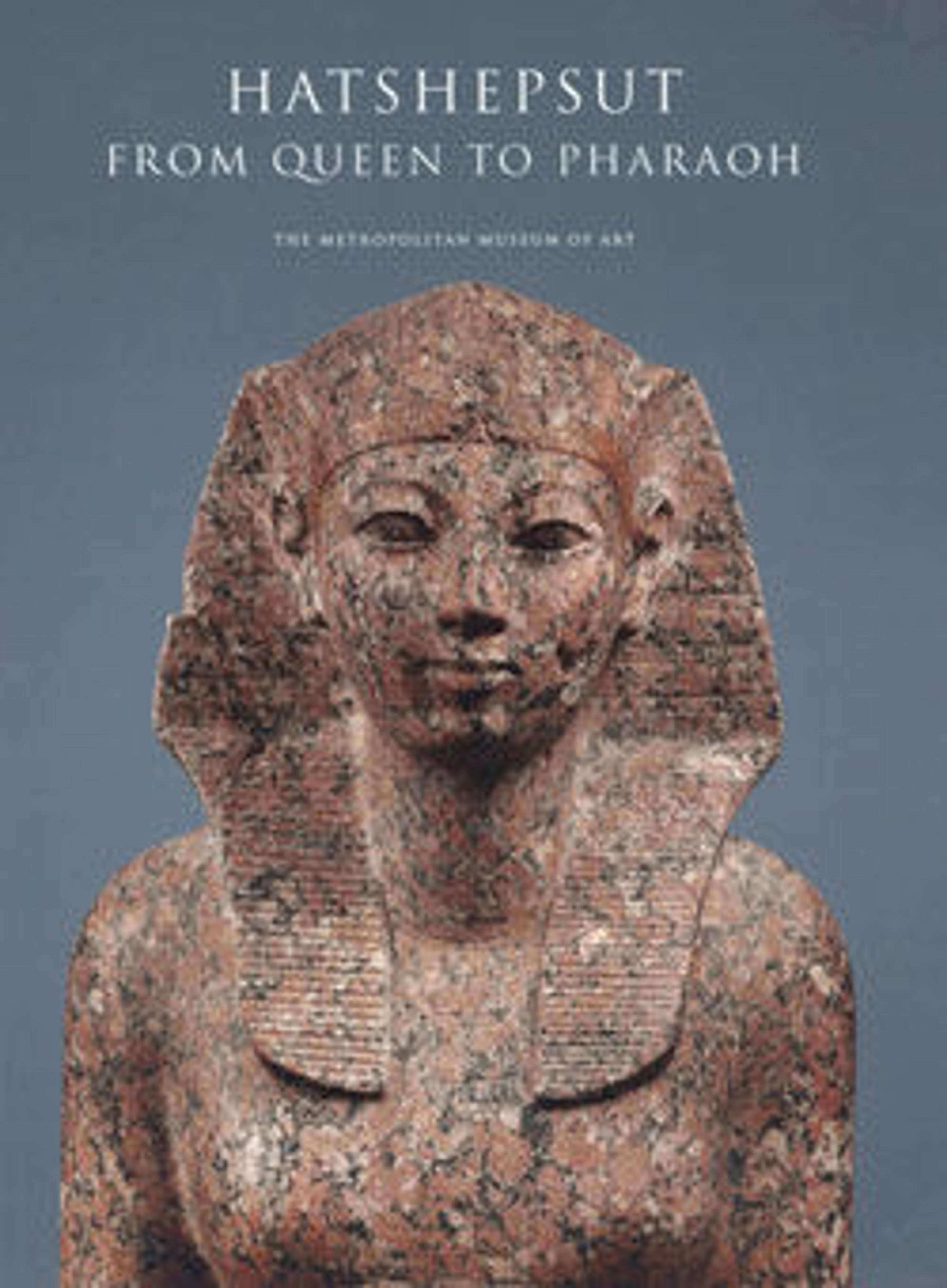Funerary mask of Hatnefer
In 1936, the Museum's Egyptian Expedition discovered a rock-cut tomb on a hillside just below the offering chapel of Senenmut, one of Hatshepsut's best known officials. The tomb had been prepared for the burial of Senenmut's mother, Hatnefer, who had died in her 70s, early in the joint reign of Hatshepsut and Thutmose III. By this time, Senenmut had become an important official, and he could provide a comparatively rich burial for his mother, including this gilded mummy mask, an exquisite heart scarab, and a canopic box. She was also buried with several fine pieces of personal jewelry.
Hatnefer's small burial chamber also contained the reburial of her husband, Ramose, who had died years earlier in his mid-30s. In addition, there were two wooden coffins containing the unidentified mummies of three women and four children who were probably members of the same family. Some personal items and simple grave goods had also been placed in the coffins. It appears that Senenmut took the event of his mother's death as an opportunity to move other relatives from their original graves to Hatnefer's tomb where their spirits could benefit from the funerary gifts provided for her burial. These goods included chests of linen cloth, stone and pottery jars containing animal fat and vegetable oil, baskets of food, spoiled linen, and personal belongings.
Hatnefer's mummy mask was molded from cartonnage, a material similar to papier-mache, but made with layers of linen and gesso. The mask was then overlaid with gold foil. The eyes are inlaid with Egyptian alabaster and obsidian set in ebony sockets.
Hatnefer's small burial chamber also contained the reburial of her husband, Ramose, who had died years earlier in his mid-30s. In addition, there were two wooden coffins containing the unidentified mummies of three women and four children who were probably members of the same family. Some personal items and simple grave goods had also been placed in the coffins. It appears that Senenmut took the event of his mother's death as an opportunity to move other relatives from their original graves to Hatnefer's tomb where their spirits could benefit from the funerary gifts provided for her burial. These goods included chests of linen cloth, stone and pottery jars containing animal fat and vegetable oil, baskets of food, spoiled linen, and personal belongings.
Hatnefer's mummy mask was molded from cartonnage, a material similar to papier-mache, but made with layers of linen and gesso. The mask was then overlaid with gold foil. The eyes are inlaid with Egyptian alabaster and obsidian set in ebony sockets.
Artwork Details
- Title: Funerary mask of Hatnefer
- Period: New Kingdom
- Dynasty: Dynasty 18, early
- Reign: reign of Thutmose II–Early Joint reign
- Date: ca. 1492–1473 B.C.
- Geography: From Egypt, Upper Egypt, Thebes, Sheikh Abd el-Qurna, Tomb of Hatnefer and Ramose, Mummy of Hatnefer, MMA excavations, 1935–36
- Medium: Cartonnage, gold, travertine (Egyptian alabaster), obsidian, ebony
- Dimensions: H. 45.8 cm (18 1/16 in.); W. 44 cm (17 5/16 in.)
- Credit Line: Rogers Fund, 1936
- Object Number: 36.3.1
- Curatorial Department: Egyptian Art
Audio
以下でのみ利用可能: English
3390. Funerary mask of Hatnefer
0:00
0:00
We're sorry, the transcript for this audio track is not available at this time. Please email info@metmuseum.org to request a transcript for this track.
More Artwork
Research Resources
The Met provides unparalleled resources for research and welcomes an international community of students and scholars. The Met's Open Access API is where creators and researchers can connect to the The Met collection. Open Access data and public domain images are available for unrestricted commercial and noncommercial use without permission or fee.
To request images under copyright and other restrictions, please use this Image Request form.
Feedback
We continue to research and examine historical and cultural context for objects in The Met collection. If you have comments or questions about this object record, please complete and submit this form. The Museum looks forward to receiving your comments.
